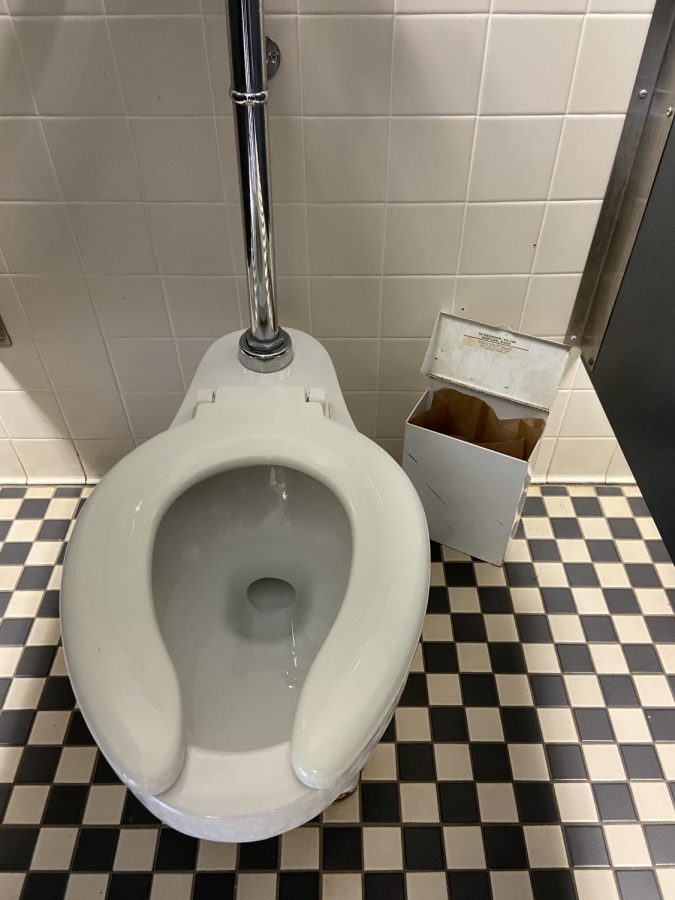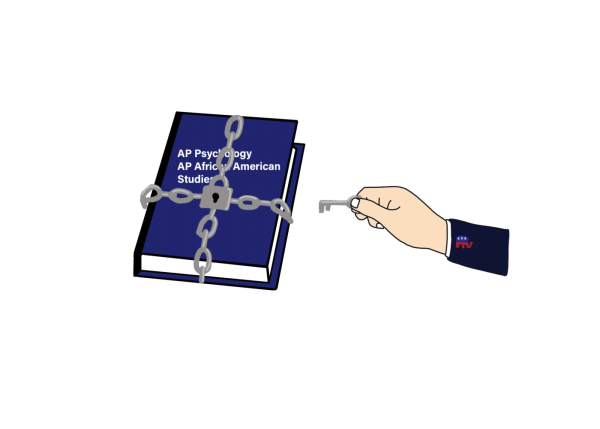Update to sanitary disposal boxes necessary to protect hygiene
Faulty sanitary disposal boxes pose a threat to students’ hygiene.
February 26, 2020
Many girls have found themselves in this predicament: they realize there is no sanitary disposal box in their bathroom stall once it’s already too late. They are then faced with the difficult question: should they commit the forbidden act of flushing a sanitary product down the toilet, or do they wrap it in enough toilet paper that the blood doesn’t seep through before they can find a trash can to dispose of it?
Either way proves hazardous and unsanitary. Flushing tampons or pads can expose restroom users and custodial staff to bloodborne pathogens like hepatitis B, hepatitis C and Methicillin-resistant Staphylococcus Aureus (MRSA). Carrying used tampons and pads out of a stall to throw them away poses the threat of transferring bodily fluids to surfaces such as bathroom doors and locks. In order to ensure safety and sanitation, the school’s administration ought to install sanitary disposal boxes in the bathrooms that currently lack these necessities.
Liberty Hygiene defines a sanitary disposal box as a safe and hygienic unit provided for women to dispose of sanitary items. When attempting to change one’s sanitary products in Grady’s new portable classroom building, girls will quickly realize that not a single stall is equipped with a sanitary disposal box.
In the United Kingdom, it has been law since 1992 that all places of work must provide all cubicles used by women with a suitable method for disposing of sanitary waste. However, a law like this has yet to exist in the United States or outside of workplace regulations, such as in schools.
The United States has the Occupational Safety and Health Administration (OSHA) as part of its labor department. The OSHA covers most private and public sector employers and employees. However, its rules don’t directly address tampon and pad disposal; the agency only requires regular cleaning and decontamination for other surfaces that are exposed to blood.
The OSHA reports that 5.6 million employees in the United States are at risk of exposure to bloodborne pathogens in the workplace. This high number of workers reported at risk shows just how serious the situation is. It is imperative that Grady takes action to protect its students from bloodborne pathogens.
Not only do some bathrooms completely lack sanitary disposal boxes, but many of the existing boxes are faulty. With some of the boxes lacking bottoms to actually hold the contents in and with most of the boxes unlined with sanitary paper, sanitation is still greatly at risk, even in the bathrooms equipped with sanitary disposal boxes.
Faulty boxes lead to menstrual products lying on the floor of the bathroom under where the bottom of the box should be. They also lead to months-old blood crusted on the sides of the boxes, never to be cleaned. No one deserves to use a school bathroom in these undeniably disgusting conditions.
Taking the precautions of putting liners in sanitary disposal boxes, fixing broken boxes and adding boxes to stalls that lack them all together are minor but necessary improvements the school must take in order to keep students, custodial staff and anyone that comes in contact with these boxes out of harm’s way.













